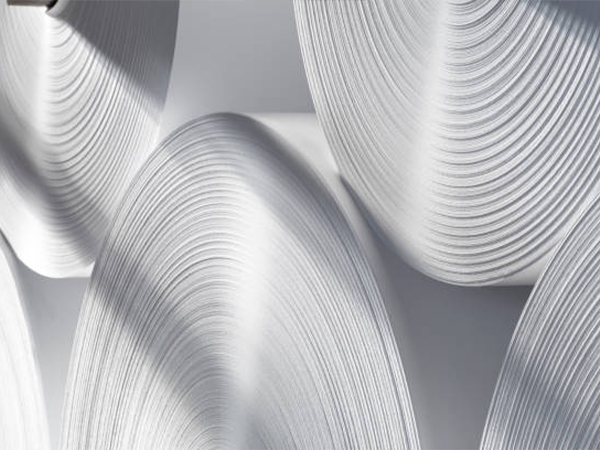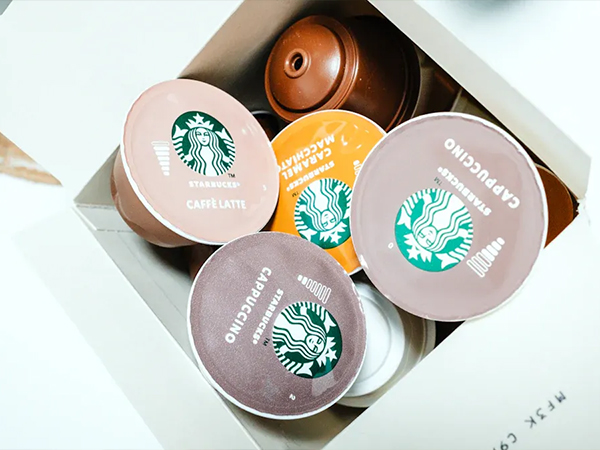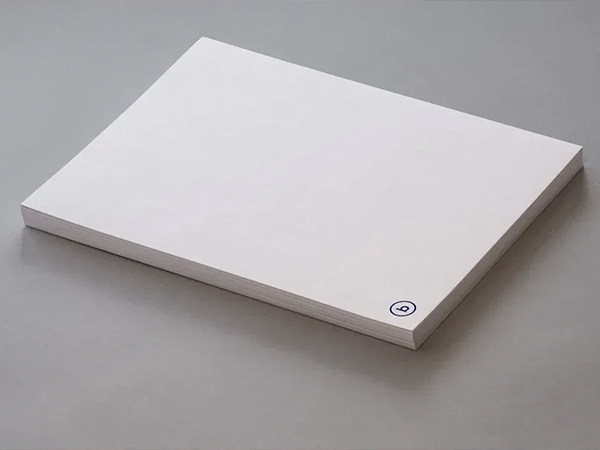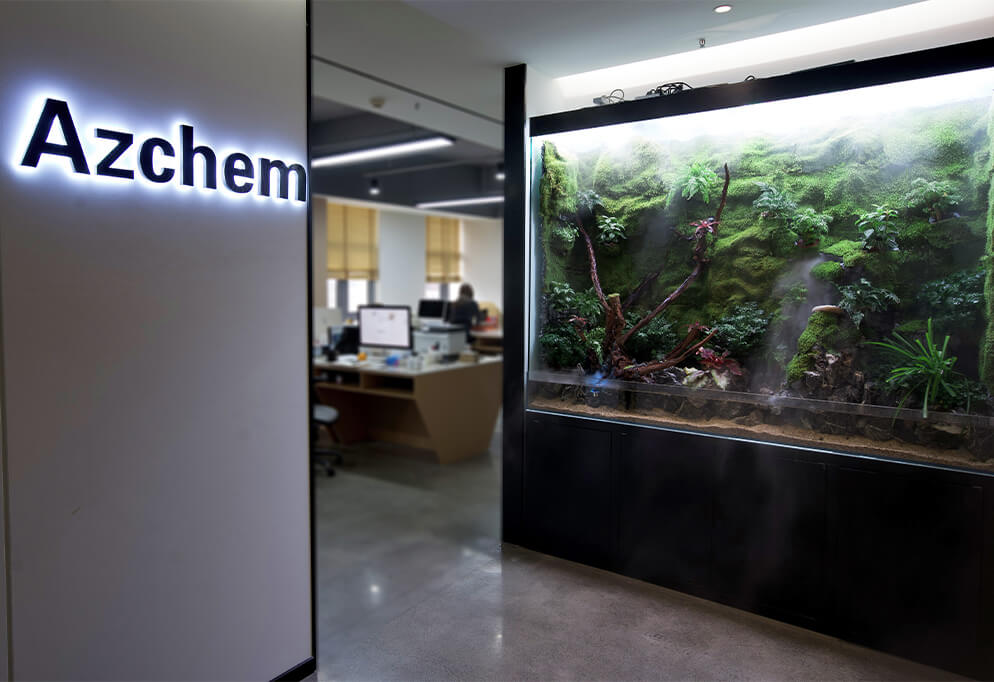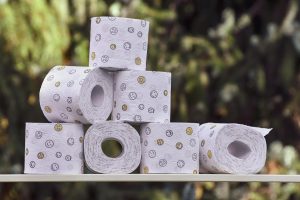
Many people experience the annoyance of a napkin tearing apart just when it is needed most. Some napkins, however, stay intact and reliable even after absorbing a spill. The secret lies in a special ingredient called a wet strength agent. This additive changes how napkins perform under stress. Understanding this science offers insight into the quality of products people use every day. > Curiosity about these materials can lead to a greater appreciation for everyday items.
Key Takeaways
- Wet strength agents are special chemicals added to napkins to keep them strong and prevent tearing when wet.
- These agents form strong bonds between paper fibers, helping napkins hold their shape even after absorbing liquids.
- Polyamide-epichlorohydrin (PAE) resin is the most common wet strength agent, known for its lasting strength and moisture resistance.
- Eco-friendly wet strength agents made from natural materials are growing in use, offering better biodegradability and less environmental harm.
- Manufacturers add wet strength agents early in the papermaking process to ensure even distribution and strong fiber bonding.
- Napkins with wet strength agents provide better durability, usability, and reliability, making them ideal for messy meals and cleaning tasks.
- Strict safety regulations and certifications ensure that wet strength agents used in napkins are safe for consumers and the environment.
- Wet strength agents also improve the performance of tissues, towels, packaging, and molded fiber products by enhancing their wet durability.
Wet Strength Agent Basics
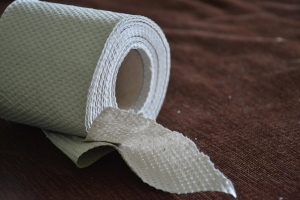
Definition
A wet strength agent refers to a chemical additive that manufacturers incorporate into paper products to improve their durability when exposed to moisture. These agents play a critical role in the papermaking process, especially for items like napkins, tissues, and paper towels that often encounter water. When a napkin absorbs liquid, the cellulose fibers in the paper tend to weaken and separate. The wet strength agent intervenes by forming strong chemical bonds between these fibers, allowing the paper to maintain its structure even when wet.
Several chemical compounds serve as wet strength agents in the paper industry. The most common include:
- Epichlorohydrin
- Melamine
- Urea Formaldehyde
- Polyimines
These chemicals polymerize within the paper matrix, creating networks that reinforce the paper’s strength under wet conditions.
A comparison of the main chemical classes and their uses appears in the table below:
| Chemical Compound/Class | Description/Use |
|---|---|
|
Urea/Formaldehyde Resins |
Cross-link cellulose fibers to improve moisture resistance. |
|
Melamine/Formaldehyde Resins |
Enhance wet strength in paper products. |
|
Polyamide-Amine-Epichlorohydrin (PAE) Resins |
Form covalent bonds with cellulose fibers for added strength. |
|
Epichlorohydrin Resins |
Increase wet strength, often used in tissue and packaging papers. |
|
Polyamides |
Contribute to wet strength by cross-linking fibers. |
|
Polyacrylamides |
Used as wet strength resins in various paper grades. |
|
Polyvinylamines |
Enhance wet strength properties. |
|
Polyimines |
Polymerize in paper to form strengthening networks. |
Purpose in Paper Products
The primary function of a wet strength agent in paper products centers on enhancing mechanical properties when the paper becomes wet. These agents achieve this by forming robust bonds and networks between cellulose fibers. As a result, the paper resists tearing and maintains its integrity after absorbing liquids.
Key purposes include:
- Increasing water resistance so napkins and tissues do not disintegrate during use.
- Improving durability, which allows users to handle wet paper products without frustration.
- Reinforcing fiber bonding, which helps the paper retain its shape and strength.
Some wet strength agents, such as chitosan and nanofibrillated cellulose (NFC), offer additional benefits. Chitosan interacts with cellulose fibers through its cationic charge, while NFC bridges fibers and reduces porosity. The synergy between these materials can improve wet strength without sacrificing biodegradability.
Manufacturers select specific wet strength agents based on the desired balance of strength, safety, and environmental impact. This careful selection ensures that everyday products like napkins remain reliable and effective, even in challenging conditions.
How Wet Strength Agents Work
Fiber Bonding
A wet strength agent enhances the durability of napkins by forming strong chemical bonds with cellulose fibers. During the papermaking process, these agents interact with the fibers at a molecular level. For example, the laccase–TEMPO system modifies cellulose by oxidizing its primary hydroxyl groups. This reaction introduces aldehyde and carboxyl groups, which then form hemiacetal linkages between cellulose chains. These new covalent bonds create a network that holds the fibers together, even when exposed to water.
Polyamideamine-epichlorohydrin (PAE) resins represent another common wet strength agent. PAE resins bond to cellulose through covalent ester bonds formed between their azetidinium groups and the carboxyl groups on cellulose. Heating during the drying stage promotes further cross-linking, resulting in a water-insoluble network. Electrostatic interactions also help retain cationic PAE molecules on the negatively charged cellulose surface, making the bonding process more efficient. This robust network prevents fiber detachment and maintains the napkin’s structure under wet conditions.
Strong fiber bonding is the foundation of wet strength in high-quality napkins.
Water Resistance
Wet strength agents impart water resistance to paper products through two main mechanisms:
- Protection Mechanism: The agent forms a protective network around the cellulose fibers. This network shields the natural hydrogen bonds from water, reducing the risk of fiber swelling and bond breakage.
- Reinforcement Mechanism: The agent chemically cross-links with the fibers, creating new water-resistant bonds. These bonds remain intact even after water disrupts the original hydrogen bonds.
During manufacturing, the wet strength agent mixes with the pulp and bonds with the fibers as the paper dries. Once set, the agent becomes water-insoluble and remains fixed between the fibers. This fixed network blocks water from penetrating the fiber pores, preventing swelling and maintaining the paper’s strength.
- The result: napkins retain their integrity and resist tearing, even after absorbing liquids.
Treated vs. Untreated Napkins
The difference between napkins treated with a wet strength agent and those left untreated becomes clear when examining their performance in wet conditions. Untreated napkins, composed solely of cellulose fibers, lose about 95% to 97% of their tensile strength when saturated with water. This dramatic loss means they easily tear or disintegrate during use.
In contrast, napkins treated with temporary wet strength resins retain a much higher proportion of their original strength. These treated napkins maintain a wet tensile strength to dry tensile strength ratio of at least 10%, and often 12% or more. For example, after soaking for 90 minutes, treated napkins still hold significantly more strength than untreated ones, even though some decay occurs over time. Standardized testing confirms that treated napkins remain reliable and functional, providing a clear advantage for consumers who expect durability from their paper products.
When choosing napkins, those enhanced with a wet strength agent offer superior performance and reliability, especially during messy meals or spills.
Types of Wet Strength Agents
Wet strength agents fall into several categories, each with unique properties and applications. The table below summarizes the main types used in the paper industry:
| Category | Description | Examples and Characteristics |
|---|---|---|
|
Temporary Wet Strength |
Provides short-term wet strength that decays over time. |
Aldehyde-based agents like Dialdehyde Starch (DAS), Glyoxal (GX), and Glyoxylated Polyacrylamide (GPAM). Biodegradable and easy to repulp. |
|
Permanent Wet Strength |
Maintains high wet strength even after prolonged soaking. |
Polyamidoamine Epichlorohydrin (PAAE), Polyamine Epichlorohydrin (PAmE), Polyethylene Imine (PEI), Polyvinyl Amines (PVAm), Urea-Formaldehyde (UF), Melamine-Formaldehyde (MF). Strong covalent bonding and resin crosslinking. |
|
Natural Wet Strength Agents |
Biodegradable and non-toxic, but may have performance limitations and higher costs. |
Modified starch, chitosan, cellulose nanofibrils, soy protein, lignin. |
Polyamide-Epichlorohydrin (PAE)
Polyamide-epichlorohydrin (PAE) resin dominates the global market for wet strength agents, holding a market share of over 90%. Manufacturers prefer PAE because it delivers superior wet strength and moisture resistance, which are essential for napkins and other tissue products. PAE resin forms strong, permanent bonds with cellulose fibers, ensuring that napkins remain durable even after repeated exposure to water. This resin works well under both neutral and alkaline conditions, making it versatile for different papermaking processes.
Despite its higher cost compared to other agents, PAE continues to see strong demand. Its ability to impart long-lasting wet strength and resist breakdown during use makes it the top choice for high-quality napkin production. Market trends indicate that PAE will continue to grow in popularity, driven by its unmatched performance in maintaining napkin integrity.
PAE resin sets the industry standard for permanent wet strength, ensuring napkins stay strong and reliable during use.
Urea-Formaldehyde (UF)
Urea-formaldehyde (UF) resin serves as another important wet strength agent, especially in applications where cost efficiency is a priority. UF resin exhibits strong adhesion and high flexibility, which improves the toughness of paper products. During the curing process, UF forms a three-dimensional crosslinked network through the creation of methylene and ether bridges. This network provides mechanical strength and wet durability.
Key chemical properties of UF include:
- High reactivity, enabling efficient curing and crosslinking.
- Strong adhesion and crystalline structures, which enhance strength and elasticity.
- Formation of a rigid, insoluble thermoset network that resists water penetration.
- Increased viscosity during curing, which stabilizes the resin and improves performance.
However, UF resins can show some moisture sensitivity over time due to reversible aminomethylene links. This characteristic may reduce long-term wet strength under humid conditions. Despite this limitation, UF remains a popular choice for many paper products because of its balance between performance and cost.
Melamine-Formaldehyde (MF)
Melamine-formaldehyde (MF) resin offers another solution for achieving permanent wet strength in napkins and other paper products. MF resin forms a dense, crosslinked structure that provides excellent resistance to water and mechanical stress. The addition of melamine increases the rigidity and durability of the cured resin, making it suitable for demanding applications.
Manufacturers often use MF resin in combination with other agents to optimize performance. Its ability to maintain strength after repeated wetting and drying cycles makes it valuable for products that require high durability. MF resins also contribute to the smoothness and brightness of finished paper, enhancing both function and appearance.
The choice of wet strength agent depends on the desired balance of strength, cost, and environmental impact for each application.
Eco-Friendly Alternatives
Paper manufacturers increasingly seek eco-friendly alternatives to traditional wet strength solutions. These alternatives rely on renewable natural raw materials, such as starches and polysaccharides, instead of oil-derived chemicals. Bio-based agents offer improved biodegradability and align with growing environmental concerns.
Several factors drive the adoption of these sustainable options:
- Environmental Regulations: Countries with strict environmental policies, including Germany, the United States, China, India, and Japan, encourage the use of biodegradable and recyclable agents. Regulatory pressure compels manufacturers to shift away from conventional synthetic chemicals.
- Consumer Demand: Shoppers now prefer products that minimize environmental impact. The rise of e-commerce and the need for sustainable packaging further accelerate this trend.
- Industry Applications: The packaging sector, tissue and sanitary products, and various industrial uses lead the way in adopting eco-friendly wet strength solutions.
Manufacturers recognize that eco-friendly agents not only reduce environmental harm but also enhance brand reputation among environmentally conscious consumers.
Despite these advantages, several challenges hinder widespread adoption. High production costs for bio-based agents remain a significant barrier. Manufacturers must also navigate complex global regulatory standards, which vary by region and product type. These hurdles require ongoing investment in research and development.
The industry responds with innovation. Companies invest in new technologies, such as nanotechnology and advanced formulations, to improve both the performance and cost efficiency of eco-friendly agents. These innovations help bridge the gap between environmental responsibility and product effectiveness.
- Key points about eco-friendly alternatives:
- Derived from renewable resources like starch and polysaccharides
- Biodegradable and less harmful to the environment
- Adoption rates rise in regions with strict regulations and strong consumer demand
- Packaging and tissue sectors drive market growth
- High production costs and regulatory complexity present challenges
- Ongoing research focuses on improving performance and compliance
The market for sustainable wet strength solutions continues to evolve. As regulatory and consumer pressures increase, manufacturers will likely expand their use of biodegradable and recyclable agents. The future of paper products points toward greener, more responsible choices.
Manufacturing Process
Addition to Pulp
Manufacturers introduce wet strength additives during the earliest stages of papermaking. They add these agents directly to the paper pulp, which consists of water and cellulose fibers. This timing proves critical. Early addition allows the chemicals to interact thoroughly with the fibers, ensuring even distribution throughout the pulp. As a result, the paper gains enhanced resistance to moisture and maintains its strength after exposure to liquids. This approach mirrors the use of wet-end sizing agents, which also enter the process at this stage to improve dimensional stability and reduce water absorption. By incorporating wet strength additives early, manufacturers set the foundation for durable, high-quality napkins.
Sheet Formation
The next step involves forming the paper sheet from the treated pulp. Several parameters during this stage influence the final product’s strength and performance:
- Wet-web solid content during pressing increases hydrogen bonding between fibers, which boosts wet strength.
- The beating process exposes more hydroxyl groups on fiber surfaces, enhancing hydrogen bonding but sometimes damaging fiber structure.
- Cross-linking agents, such as cationic polyacrylamide, strengthen the bonds between cellulose fibers.
- Nano-fibrillated cellulose (NFC) creates cross-linked networks, raising tensile energy absorption and improving sheet durability.
- NFC can slow drainage during pressing due to its hydrophilic nature, which affects how well the sheet forms.
- Other factors, including fiber properties, surface tension, interfiber friction, and press conditions, also play important roles.
Manufacturers must balance these variables to optimize both strength and production efficiency. They often adjust the pulp composition and processing conditions to achieve the desired wet strength without compromising absorbency or softness.
Drying and Curing
The drying and curing phase determines the final properties of the napkin. The tissue sheet passes over a Yankee dryer, which removes moisture and crepes the sheet to enhance softness and flexibility. During this process, adhesives and coatings applied to the dryer surface influence the sheet’s characteristics. The curing step, often performed at 105°C for five minutes, activates the chemical reactions between the additives and cellulose fibers. This heat treatment enables the formation of covalent bonds and cross-links within the fiber network. Polyamide-epichlorohydrin resins, for example, react with cellulose to create a permanent structure that resists water damage. The combination of drying and curing solidifies these bonds, resulting in napkins that maintain their strength and absorbency even after repeated use.
Proper drying and curing ensure that napkins deliver reliable performance in real-world conditions.
Benefits for Napkin Users
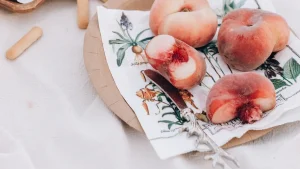
Durability
Napkins enhanced with a wet strength agent demonstrate remarkable durability, especially when exposed to moisture. These additives create strong chemical bonds between cellulose fibers, which helps the napkin resist tearing and disintegration. In practical terms, this means users can rely on napkins to maintain their structure during use, even after absorbing liquids. Restaurants and households benefit from this feature, as napkins often encounter spills, greasy foods, and repeated handling. The improved fiber bonding ensures that the napkin does not fall apart, providing a consistent and dependable experience for users.
Durable napkins reduce waste and frustration, allowing people to use fewer napkins per meal or cleaning task.
Usability
Usability stands as a key advantage for napkins treated with wet strength agents. In both foodservice and home environments, napkins must perform a variety of tasks, from wiping spills to cleaning hands and surfaces. Papers with higher wet strength resist tearing, which is essential for handling wet or greasy items. This characteristic ensures that napkins remain functional throughout their intended use. Technologies such as METRIX Armor and METRIX Titan optimize the balance between strength and environmental responsibility, making napkins both effective and sustainable.
- Napkins with enhanced strength:
- Stay intact during wiping and cleaning
- Absorb liquids efficiently
- Handle tough kitchen tasks without falling apart
These qualities make napkins more practical and valuable in everyday scenarios, supporting both convenience and hygiene.
Reliability
Reliability defines the user experience with napkins in demanding situations. Scientific studies show that wet strength agents, such as PAE, chemically cross-link cellulose fibers, resulting in a tightly connected and compact structure. This chemical network maintains the napkin’s integrity even when exposed to water, unlike untreated napkins that quickly lose strength. Microscopic analysis confirms that treated napkins hold together better, providing consistent performance during use.
Reliable napkins give users confidence, whether they are cleaning up a spill at home or serving guests in a restaurant.
A reliable napkin does not break down under pressure, ensuring that users can complete their tasks without interruption. This consistency enhances satisfaction and trust in the product, making it a preferred choice for both consumers and businesses.
Environmental and Safety
Consumer Safety
Manufacturers and regulators place a high priority on consumer safety when producing napkins and similar paper products. The chemicals used to improve wet strength can leave behind residues or by-products that may pose health risks. The table below outlines the main safety concerns, regulatory responses, and actions taken by manufacturers:
| Safety Concern | Description | Regulatory Response | Manufacturer Actions |
|---|---|---|---|
|
Presence of harmful residues (DCP, MCPD) |
By-products of PAAE resin synthesis; genotoxic and carcinogenic potential |
German Federal Water Act limits AOX to 100 g/l; DCP must be below 2 g/l; MCPD below 12 g/l; labeling required if DCP > 1000 ppm |
Development of 2nd and 3rd generation PAAE resins with reduced DCP/MCPD; compliance with FDA and BfR standards; ecolabel certifications (RAL, Nordic Swan) |
|
Formaldehyde emissions |
From urea- and melamine-formaldehyde resins; workplace exposure risks |
OSHA regulates formaldehyde levels in workplace and products |
Shift from formaldehyde-based resins to PAAE resins to reduce exposure |
|
Environmental AOX pollution |
AOX from wet strength agents and chlorine bleaching effluents |
Wastewater treatment and monitoring mandated by law; limits on AOX discharge |
Optimization of resin usage; use of functional promoters and bonding agents to reduce chemical consumption and AOX levels |
Manufacturers continue to improve product safety by developing advanced resins with lower levels of harmful by-products. For example, some companies have reduced the use of wet strength resin by partially replacing it with cationic bonding agents. This change not only lowers chemical consumption but also reduces the presence of potentially harmful substances in finished napkins.
Note: Many napkin producers seek ecolabel certifications, such as RAL and Nordic Swan, to demonstrate their commitment to consumer safety and environmental responsibility.
Biodegradability
The environmental impact of napkins depends on the type and amount of chemicals used during production. Traditional wet strength additives can slow down the natural breakdown of paper in landfills or composting facilities. However, manufacturers have made progress by introducing bio-based and biodegradable alternatives. These new agents, often derived from renewable resources like starch or cellulose, break down more easily in the environment.
Some companies also optimize the use of functional promoters and bonding agents. This approach allows them to maintain product performance while reducing the total amount of synthetic chemicals. As a result, napkins become more compatible with recycling and composting processes. The shift toward biodegradable solutions aligns with growing consumer demand for sustainable products.
Regulations
Strict regulations govern the use of chemical additives in paper products, especially those intended for food contact. In the United States, the Food and Drug Administration (FDA) regulates wet strength additives under 21 CFR § 176.170. This rule permits only specific polyamine-epichlorohydrin resins and sets a maximum concentration of 1 percent by weight of the dry paper fibers. The regulation also defines chemical characteristics and limits to ensure safety for consumers.
European authorities, such as the German Federal Water Act and the Federal Institute for Risk Assessment (BfR), set additional limits on harmful by-products and require clear labeling when certain thresholds are exceeded. Manufacturers must comply with these standards to sell their products in regulated markets. Many companies also pursue voluntary certifications to meet or exceed legal requirements.
Regulatory compliance ensures that napkins remain safe for everyday use and do not pose unnecessary risks to consumers or the environment.
Applications Beyond Napkins
Tissue and Towels
Wet strength agents play a vital role in the production of tissue and towel products. Manufacturers add these agents, such as epoxidized polyalkyleneamine-amide resins, during the papermaking process to increase the resistance of paper to rupture or disintegration when wet. Untreated cellulose fibers lose most of their strength after soaking in water. The addition of wet strength agents ensures that tissue and towel products remain intact, even when exposed to moisture. These agents help maintain product durability and integrity under wet conditions, which untreated alternatives cannot achieve.
Manufacturers face the challenge of balancing softness and strength. Wet strength agents help reduce tensile strength loss during wetting, allowing tissues and towels to remain soft yet structurally sound. Cationic polymers adhere to negatively charged fibers, improving wet strength while preserving the desired feel. This balance allows tissues and towels to outperform untreated products, which often weaken and fall apart when wet.
Consumers benefit from tissue and towel products that stay strong and reliable, even after absorbing spills or during cleaning tasks.
Packaging
Wet strength agents have become essential in the packaging industry. These chemical additives enhance the strength and durability of paper-based packaging materials when exposed to moisture. Packaging applications include food and beverage containers, labels for bottles and cans, and disposable tableware. Wet strength agents prevent weakening, tearing, and disintegration, ensuring that packaging remains functional in damp or humid environments.
Key applications for wet strength agents in packaging include:
- Food and beverage packaging that must withstand condensation or spills
- Industrial and commercial packaging, such as cement bags and agricultural sacks, requiring durability in wet conditions
- Medical and hygiene packaging, including paper masks and gowns that maintain integrity when exposed to fluids
- Consumer goods packaging, such as shopping bags and retail boxes that resist moisture
Wet strength resins, such as urea-formaldehyde and polyamide-epichlorohydrin, suit specific packaging needs. The manufacturing process involves adding the resin to the pulp before or during sheet formation, followed by drying and curing. This process bonds the resin with cellulose fibers, resulting in packaging that retains its strength and shape. Manufacturers also consider environmental factors, developing biodegradable resins and using recycled paper to reduce impact.
Packaging with wet strength agents delivers enhanced durability, improved performance, and cost-effectiveness by reducing product failures.
Molded Fiber Products
Molded fiber products, such as foodservice containers and trays, also benefit from wet strength agents. Manufacturers introduce these chemical additives during the fiber pulp processing stage. The primary function of wet strength agents in molded fiber products is to enhance water resistance and durability. This feature is essential for products exposed to wet or moist conditions, such as takeout containers or produce trays.
Wet strength agents help molded fiber products maintain structural integrity when in contact with moisture, preventing disintegration or leakage. The benefits include improved product performance, extended usability in wet environments, and preservation of recyclability and biodegradability. Manufacturers also experience greater efficiency and consistent product quality during production.
- Molded fiber products with wet strength agents:
- Resist breaking down when wet
- Remain suitable for food contact
- Support sustainability goals through recyclability
Wet strength agents enable molded fiber products to meet the demands of modern foodservice and packaging industries, combining durability with environmental responsibility.
Wet strength agents play a vital role in ensuring napkins remain strong and reliable, even when exposed to moisture. The table below highlights the key differences:
| Property | Wet Strength Napkin | Regular Napkin |
|---|---|---|
|
Tear Resistance |
High, even when wet |
Low, tears easily when wet |
|
Durability in Moisture |
Excellent |
Poor |
Consumers benefit from napkins that resist tearing and maintain integrity during use. Ongoing innovation in wet strength agent technology continues to improve product safety, sustainability, and performance, reflecting the industry’s commitment to quality and responsible manufacturing.
FAQ
What is a wet strength agent in napkins?
A wet strength agent is a chemical additive that manufacturers use to help napkins stay strong and resist tearing when wet. This ingredient forms durable bonds between paper fibers, improving the napkin’s performance during use.
Are napkins with wet strength agents safe for food contact?
Manufacturers design wet strength agents to meet strict safety standards. Regulatory agencies, such as the FDA and BfR, approve specific agents for use in food-contact paper products. Certified napkins undergo testing to ensure consumer safety.
Do wet strength agents affect napkin recyclability?
Some traditional wet strength agents can slow down recycling or composting. Newer, eco-friendly agents improve biodegradability and recyclability. Many manufacturers now use these alternatives to support sustainable waste management.
Can people with sensitive skin use napkins containing wet strength agents?
Most napkins with wet strength agents are safe for sensitive skin. Manufacturers test products for skin compatibility. People with allergies should check product labels or choose napkins with eco-label certifications for added assurance.
How do wet strength napkins compare to regular napkins?
Wet strength napkins maintain their structure and resist tearing when wet. Regular napkins lose strength quickly after absorbing moisture. Wet strength napkins provide better durability and reliability during meals or cleaning tasks.
Are eco-friendly wet strength agents as effective as traditional ones?
Eco-friendly wet strength agents have improved significantly. Many now match the performance of traditional agents in durability and water resistance. Some may cost more, but they offer better environmental benefits.
Why do some napkins feel stiffer than others?
The type and amount of wet strength agent can affect napkin texture. Higher concentrations or certain resins may create a stiffer feel. Manufacturers balance strength and softness to meet user preferences.
What should consumers look for when choosing napkins?
Consumers should check for certifications like FDA approval or eco-labels. They can also look for information about biodegradability and skin safety. Choosing napkins with wet strength agents ensures better performance during use.
👉 Contact Us for a Customized Wet-End Solution


